 Flickr user Highway Patrol Images Flickr user Highway Patrol Images
Have you ever experienced a shortage of personnel to do a newsroom project because your top videographers are working on a special something for another department? Ever had to find a new vendor to fulfill a social media project hours before the client’s deadline? Then you know what a project-nightmare feels like, and you NEVER, EVER want to go there again. Media and communication professionals across journalism, social media, marketing communication, and media relations might want to give strong consideration to enrolling in project management courses to strengthen their effectiveness to plan, to work across the organization, to solve problems, and to increase their value at work. In other words, this will give you the strategic advantage. Whether you are in a traditional work setting or are an independent contractor working remotely in a home-office, project management training will reap rich rewards. Essential Hard Skills
Must-Have Soft Skills
How I Received Project Management Training In February 2013, I earned the Project+ certification from CompTIA, an information technology trade association. The journey started in May 2012 when my Workforce Solutions Greater Dallas caseworker introduced me to project management training to help me with career options as a result of the economic downturn. In fact, the Workforce Investment Act paid for the training at New Horizons Computer Learning Center in Irving, Texas. After passing the Project+ exam and completing all of the training that I could get at New Horizons, I can honestly say it was worth it. The training gave me a more strategic, growth-oriented mindset. And, it enhanced my problem-solving abilities across corporate and small business settings. Finally, my communication planning and management skills grew. Do you think project management is important to learn? Share your thoughts in the comments, please.
0 Comments
Project managers have a lot to be thankful for, even though “an attitude of gratitude” is more challenging to embrace some days than others. With Thanksgiving days away, project managers can increase their gratitude and ultimately their effectiveness throughout the year, with these five tips:  Image from www.theconnectedcause.com; used by Creative Commons. Image from www.theconnectedcause.com; used by Creative Commons. 5. Embrace the multitude of resources available rather than relying solely on yourself.
Such thinking stops you from moving forward; yet, the desire to learn a foreign language persists. In fact, the longer you delay taking action, the stronger the idea becomes.
Finally, you decide to research your options. Let’s say you discover numerous ways you can begin learning the foreign language (using a digital mind map) such as: Quizlet, an online class, borrowing resources from your library branch and listening to audio programs in the car. You discover a team member is fluent in the language you want to learn and willing to tutor you for a reasonable fee. Or, you can go a class at a community college or your neighbor’s cousin has a good friend who is a foreign language instructor, along with a treasure trove of other options. Suddenly, you have 10 different methods to learn the foreign language and you are sharing your goals everywhere. This generates even MORE possibilities to achieve your foreign language goals! Now that you are opening your mind to the opportunity, a waterfall of options is pouring over you. You are SO excited about learning the foreign language and ready to get started. Suddenly, you’re already dreaming of becoming a translator! What changed? Your thinking. 2. ‘Begin With the End in Mind’ Dr. Stephen Covey, the beloved and celebrated late author of the breakthrough business manual “The 7 Habits of Highly Effective People,” generated a global breakthrough and whirlwind when his book debuted in 1989. Habit 2 is “Begin With the End in Mind.” Covey writes that this habit “is based on the principle that all things are created twice. There’s a mental or first creation, and a physical or second creation to all things.” “… To the extent to which we understand the principle of two creations and accept the responsibility for both, we act within and enlarge the borders of our Circle of Influence. To the extent to which we do not operate in harmony with this principle and take charge of the first creation, we diminish it,” according to the book. Now that you are ecstatic about learning the foreign language, ask yourself: What does success look like? What results do I want to achieve? Defining “the end” by capturing your thoughts in writing enhances your capacity to achieve your goals. It’s been proven scientifically that writing goals, works. 3. Be Nimble The “Jack Be Nimble” nursery rhyme demonstrates the value of speed and the importance of project management (didn’t see that one coming, did you?) in achieving your goals. Nimble means “able to move quickly, easily and lightly.” Now, take a look at the image of Jack jumping over the candle. Let’s view the candle as the desire to learn a foreign language. Taking action quickly and moving forward to achieve your written goals will accelerate your progress. Doubtless, you will face challenges along the way (that candle is hot, of course). So, you have to have a plan covering how often you will study and factoring in how you will overcome challenges. Write down the prize for all of your efforts—be sure to document that in the plan. Whatever challenges you face--have no fear. You are equipped and committed to ACHIEVING your goals.
Why? Stakeholders bring risk to a project. The quicker you determine whether it is positive or negative, the faster you can document and plan for the risk. And, their ideas, issues and inquiries matter. Don’t miss out on this valuable data. Do you know who your stakeholders are? You should if you want the project to be a success. Remember, stakeholders include employees, customers and others. Being proactive by creating a thoughtful and responsible plan to build stakeholder engagement takes time and resources. Successful organizations START with these five steps: 1. Begin with the end in mind Listed as Habit 2 in visionary author Stephen Covey’s “7 Habits of Highly Effective People,” it’s an excellent launching pad beyond personal leadership. Determine in advance how you want the stakeholder relationship to conclude. Set that intention in writing and ensure key stakeholders understand your end game. 2. Learn your key stakeholders’ communication preferences Do they prefer regular updates via text messages? Perhaps they want face-to-face meetings or telephone calls? Or, none of the above. Once you know the answers, upload this research into your stakeholder plan to ensure you and your team follow through. Be sure to learn how often stakeholders expect updates about the project or changes and add that data to your plan. Then follow the plan. 3. Discover your stakeholders’ expectations What motivations are driving your stakeholders? Do you know their end games? When you have the answers to these and other questions, you will be on your way toward a “relationship.” 4. Invite your key stakeholders to the project launch Can you invite the stakeholders who are intensely interested or have high influence/high impact to a launch event or kickoff party? If so, it’s a great way to ensure agreement about the deliverables. It’s much smarter to get stakeholders’ input and feedback EARLY in the process than rather two days before the deadline. Make the project launch inclusive by using the research you gathered earlier. These high-touch demonstrations show your stakeholders they are valued. 5. Prepare for change requests and have a plan to address them Your stakeholders will suggest changes and how you handle them will be critical to the success of the relationship. Listening is essential. Finally, as the saying goes, “People will support what they help create.” By being proactive in identifying and working with your stakeholders, together, you build mutual success!
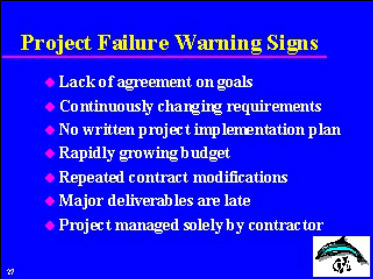 Image from faculty.washington.edu, http://goo.gl/PqMtya Image from faculty.washington.edu, http://goo.gl/PqMtya The author of Social Media for Project Managers, Elizabeth Harrin, is a strong believer in documenting lessons learned. Lessons learned capture what went right and wrong with a project. These documents are invaluable for future project planning and smart organizations adhere to this Project Management Institute best practice. Harrin's blog creatively tackled the issue of sharing lessons learned in this post, Five ways for project managers to share lessons learned. She recommends setting up a wiki to archive lessons learned and stresses the importance of READING the lessons learned to avoid "making the same mistakes again." What exactly should be included in a lessons learned document? "To be as valuable as possible, lessons learned should cover three areas: Technical aspects of the project ... Project management ... [and] Management ... ," according to Rita Mulcahy's PMP® Exam Prep, 8th edition. A critical element of lessons learned is improving future projects. You may find value in this blog post, Getting Real with Lessons Learned by Bernadine Douglas, PMP, on the Voices on Project Management blog. 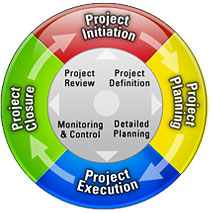 Image by Flickr user IvanWalsh.com Image by Flickr user IvanWalsh.com I attempted to pass the Project Management Professional certification *exam and didn’t. About failing the test: several people have shared that they also didn’t pass the PMP certification on their first attempt, so there’s that. However, I came away with some insights about the study of project management and how it relates to my journalism and communications background that may be helpful to my blog readers. First, I saw the connections between news and project management, between the “rundown” used in broadcast news and the “budget” generally found in print newsrooms and that of the project charter. In project management, the project charter is the official document that says someone (known as a sponsor) is paying for work to be completed by a certain deadline. Each project needs a project charter, a project manager as well as a team to do the work, of course. In news, the rundown or the budget documents the stories being planned for that day’s newspaper or newscast. In other words, the budget and the rundown are the official documents showing the lineup for each day's news product. Second, a work breakdown structure, which is used to plan the project's activities, is similar to a storyboard in broadcast. The WBS is a graphical representation of the project broken down into work packages based on the information available. The storyboard allows you to visualize the show, the movie or even the commercial as it’s supposed to appear. 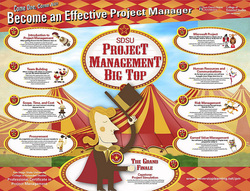 Photo by Flickr user collslee Photo by Flickr user collslee Third, iteration (repeat planning) happens a lot in project management as plans change or new information becomes available, just like in news, when there’s breaking news or an error must be corrected. Both project management and journalism are iterative. The planning continues until the news product is published or broadcast and until the deliverable has been accepted by the customer. Fourth, then the project is formally closed with all lessons learned documented and archived to aid future projects. In news, photos, scripts, past stories, court records, lawsuits, obituaries, interviews, reporters’ notes and sometimes audio/video outtakes are saved for future news packages or investigative purposes. Depending on your journalism landscape, they are saved in the morgue, the library or the database (SharePoint site), etc. Fifth, the project manager's title is similar to that of the executive editor (print) and the news director (broadcast). The project manager is in charge of the team and is faced with getting the project completed in a timely fashion, while keeping an eye on the money and the organization's business objectives. The editor and the news director are overseeing the production of a daily news product and battling to stay fiscally above water. Sixth, stakeholders are everywhere and they can make or break a project. I was especially fascinated by the stakeholder power/interest matrix that should be completed early in the project planning process. Why? Because successful project management involves identifying all the stakeholders, their interests as well as their preferred communications methods. Those communications’ preferences are expected to be documented in a communications plan, according to project management protocol. In the news business, stakeholders are online, in front of the TV screen, in the newsroom editing audio or in a nearby editing bay feverishly cutting video for a live shot five minutes away, in the sales department, in Creative Services, in the car listening to radio simulcasts, or using a digital recorder to report from a three-alarm fire at 2 in the morning. The news director and the editor have to respond to their stakeholders promptly and professionally if they want their news product to be successful. Seventh, both project management and journalism have a monitor and control process. In news, it's called copy editors (print) or producers (broadcast). The producer & copy editor are responsible for ensuring the accuracy /integrity of the news product and that the show runs on time. They do fact checks and verify the source's name is correct. They are concerned with attribution (what source said the mayor has been charged with the crime or whatever). And money, least I forget that: they check figures and review reporters' math.
In project management, the monitor and control process, under the project manager's reign, focuses on keeping the project on budget, within scope and that risks are monitored and controlled, among other knowledge areas. Finally, like journalism, project management requires the ability to make decisions fast, change direction quickly or even close (cancel) a failing project. Similarly, their overall shared goal is achieving customer (stakeholder) satisfaction. P.S. I actually enjoyed the computer-based *testing process (sounds odd, I know) because once I settled in, the exam provided a lot of information about learning styles and the value of lifelong education. Hmmm, maybe there’s a way to marry project management and journalism/communications/social media/PR? |
About the Author:Regina L. Burns, M.A., Project+, is an award-winning multimedia editor and journalist, specializing in Black history and African American stories at Harvest Reapers Communications. Her work has been published in Texas Highways magazine, WFAA-TV, The Dallas Morning News, the Fort Worth Star-Telegram as well as The Commercial Appeal, the Tri-State Defender and The Flyer, among others. Categories
All
Archives
January 2024
|

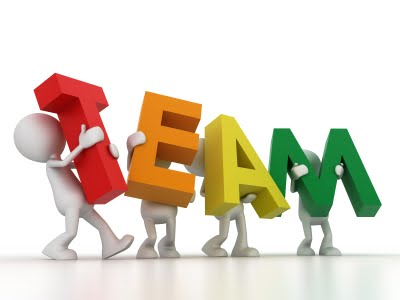
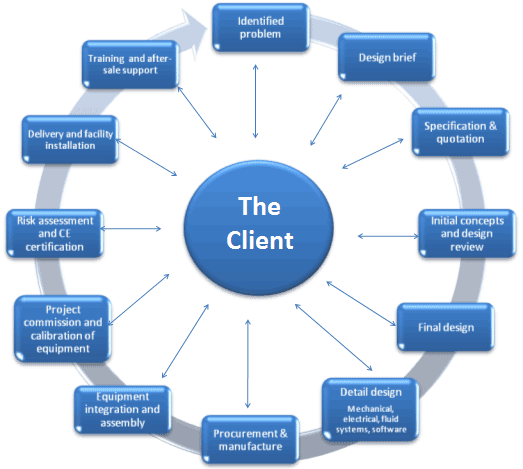

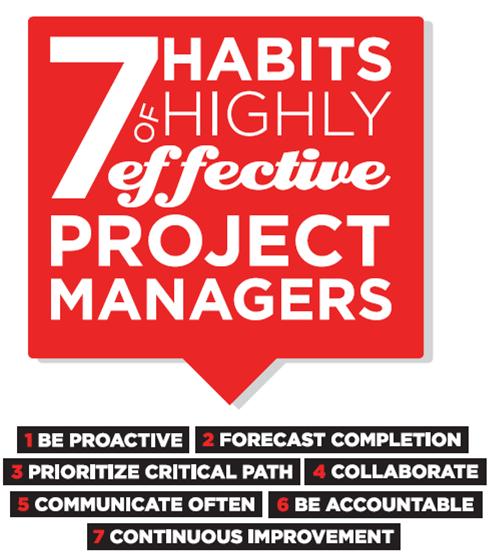
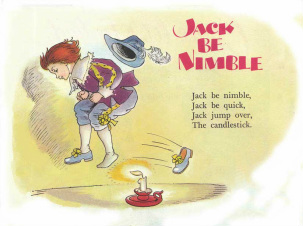



 RSS Feed
RSS Feed